This Renault Clio V6 Trophy is a fun, French track weapon for $70K
Turn back the clock to about 2000. Now imagine that you’re a car company looking to promote your latest frugal, front-wheel drive, fuel-sipping four-banger hatchback. Naturally, your first call is to a racing outfit to completely re-engineer and beef up the little car, yanking out the four-cylinder up front in the process and stuffing a V-6 in the back. You then rush the car to market, sell it in small numbers at a surprisingly low price (which can’t have been profitable), and run a one-make racing series with it for a few years to promote the regular model.
The plan sounds awesome, not to mention completely unnecessary, but Renault used its Clio hatchback to bring this imagined scenario to life from 2001 to ’05. One of the original track cars just sold this week at a sinister $66,666 winning bid ($69,999 with buyer’s premium), which seems like plenty of rarity and track day fun per dollar.
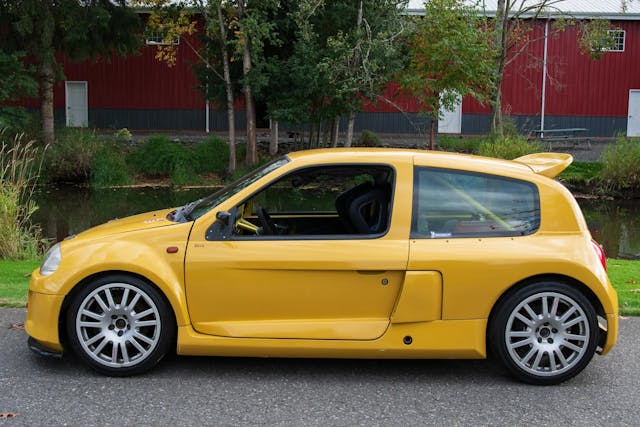
Renault started selling the Clio in 1990, and while we’ve never been able to buy one here in the States, it is consistently one of Europe’s best-selling cars and is a popular commuter car in South America as well. It’s sort of like a French VW Golf. The second-generation Clio debuted in 1998, and at the Paris Motor Show that year, Renault trotted out a sporty mid-engine Clio hatchback as a concept car. It was a clear reminder of the R5 Turbo rally racers of the 1980s, which were themselves reworked mid-engine versions of the Clio’s predecessor, the Renault 5.
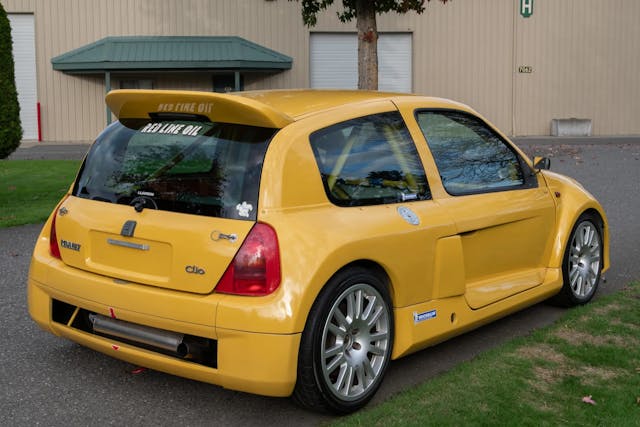
Encouraged by the concept car’s reception, Renault worked with British firm Tom Walkinshaw Racing (TWR) of Le Mans–winning and Jaguar XJR-15 fame to develop the car for two purposes. The first was a one-make racing program called the Renault Clio V6 Trophy series. The second was a road-going version of the racer, and TWR built the early road cars at its facility in Sweden. The entire rear of the Clio was reworked, and the inherent practicality of a hatchback was wiped away by the 3.0-liter V-6 borrowed from the Renault Laguna family car that got dropped in place of where the rear seats and cargo space used to be. A six-speed manual was the only available gearbox, and new suspension (MacPherson up front, multi-link in the rear) was added. A Clio V6 is wider, lower, and longer than the standard model, with a squat stance and big butt. Launched in late 2000 and selling for less than £30,000 in the UK, this pocket exotic seemed like a bargain.
But it wasn’t perfect. The TWR connection was reassuring, and having a big engine stuffed into the middle of small car is often a recipe for fun, but early reviewers were a little disappointed and sometimes frightened. First, the Clio V6 was over 600 pounds heavier than the standard Clio, so despite the 227 hp driving the rear wheels, it wasn’t as much faster than the regular front-driver as you might think. The 0-to-60-mph sprint came in a little over six seconds.
Then there was the scary handling. The engine provides plenty of oomph and makes a nice throaty sound, but it sits high up in the chassis. The high center of gravity plus its short wheelbase made this spunky Clio a bit unpredictable. According to Autocar, the “approach to corners went grip, grip, grip, grip, gone,” and the Clio V6 is “at its absolute best when parked.” Andrew Frankel later remembered that people “always bang on about early Porsche 911s as being the trickiest road cars to drive on the limit, but in my experience they’re not even close. A Ferrari 348 is worse than that and worse than the 348 was that Clio.” Ouch.
After about 1500 Clio V6 road cars sold, a new Phase 2 model came out. Production moved to France at the Renaultsport factory in Dieppe, and a facelift ditched the narrow, grin-like grille for larger grilles split by the Renault diamond in the middle. Improvements to the suspension, stiffer subframes, and a longer wheelbase made it friendlier to drive, while different gear ratios and more power thanks to reworked induction and cylinder head made it a little quicker, too.
Even so, Renault stopped selling this imperfect but undeniably cool car after 2005. Only about 3000 examples of the Phase 1 and Phase 2 models were built. If you’re of a certain age, you probably drove one of these in a video game with your thumbs, but Clio fans in the States will have to keep waiting for the real thing—you can’t import one till they’re 25 years old.
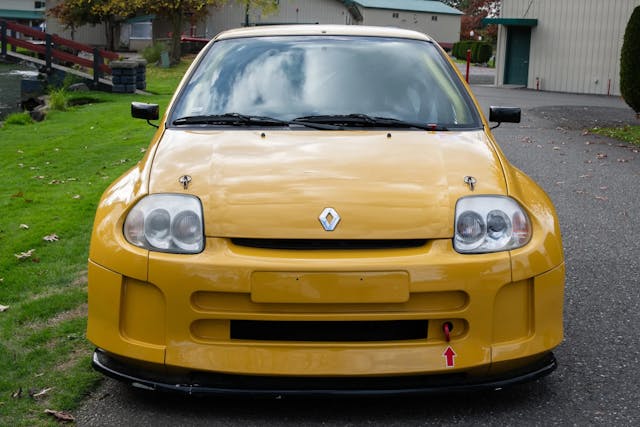
As for the race cars, they effectively replaced Renault’s previous one-make championship, the Renaultsport Spider Trophy series, which wrapped up in 1998 before the Clios debuted at Jarama in 1999 (Renault’s 100th birthday year). Compared to the road cars, the Clio V6 Trophy versions had more power (281 hp) and a six-speed sequential gearbox instead of the standard manual.
If the Clio V6 was a flawed road car, that doesn’t mean that it made a perfect race car. The rear end was prone to hopping and there are plenty of reports of poor reliability, though participants noted good support from Renault, and the series attracted talent like Philippe Siffert and Anthony Beltoise (both sons of F1 greats), as well as current F1 safety car driver Bernd Mayländer. It was also a not-so-expensive way to go racing—a new car for the 2003 season cost €45,800. The series tackled famous European tracks like Monaco and Nürburgring, and even served as a support race for the 1999 24 Hours of Le Mans.
The Trophy car sold this week is represented as #79 of the 159 Trophy versions built by Renaultsport. No race history is represented, but it was imported from Japan earlier this year, and the build date is believed to be 1999. Track-prepped with OMP seats, Sparco six-point harnesses and aluminum pedals, digital dash, roll cage, fire system, brake-bias adjuster, and Cromodora wheels, it does not have a title as it is a track car, but it does have a Japanese-assigned VIN.
Like any race car, this eccentric little French hatchback probably needs sorting before being driven in anger. It does run and drive, though, and looks like a very fun way to annoy some Porsches at your local track day. Hopefully the owner does just that. Since he “can’t wait to see it parked next to my street legal Clio V6 =)” he certainly knows what he just bought.
The same seller sold another Japanese–imported Clio V6 Trophy last year for $78,750. This $67K sale price is closer to what good Phase 2 road cars sell for on the other side of the pond, and seems like a decent value. There are certainly more expensive and slower ways to go racing.
***
Check out the Hagerty Media homepage so you don’t miss a single story, or better yet, bookmark it. To get our best stories delivered right to your inbox, subscribe to our newsletters.
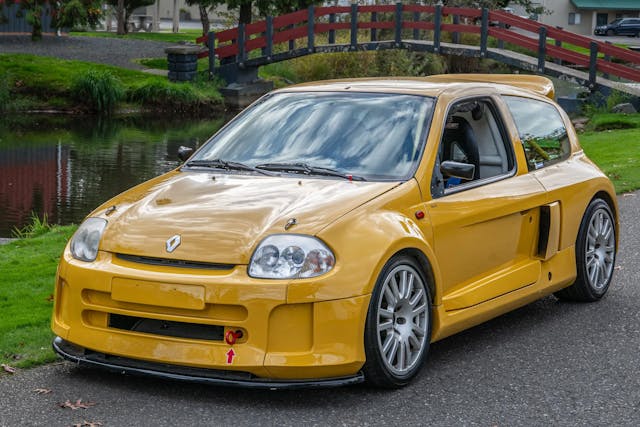
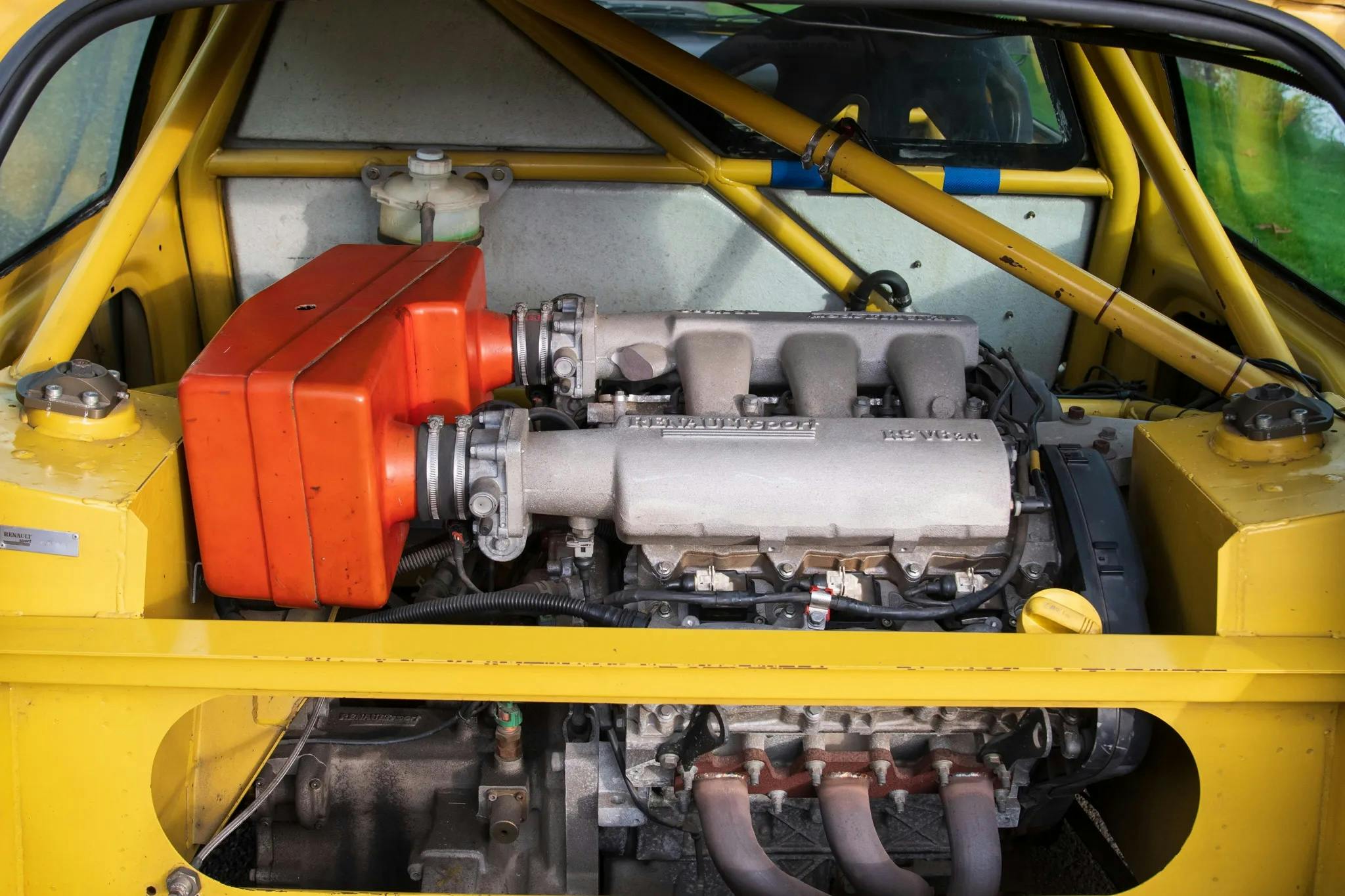
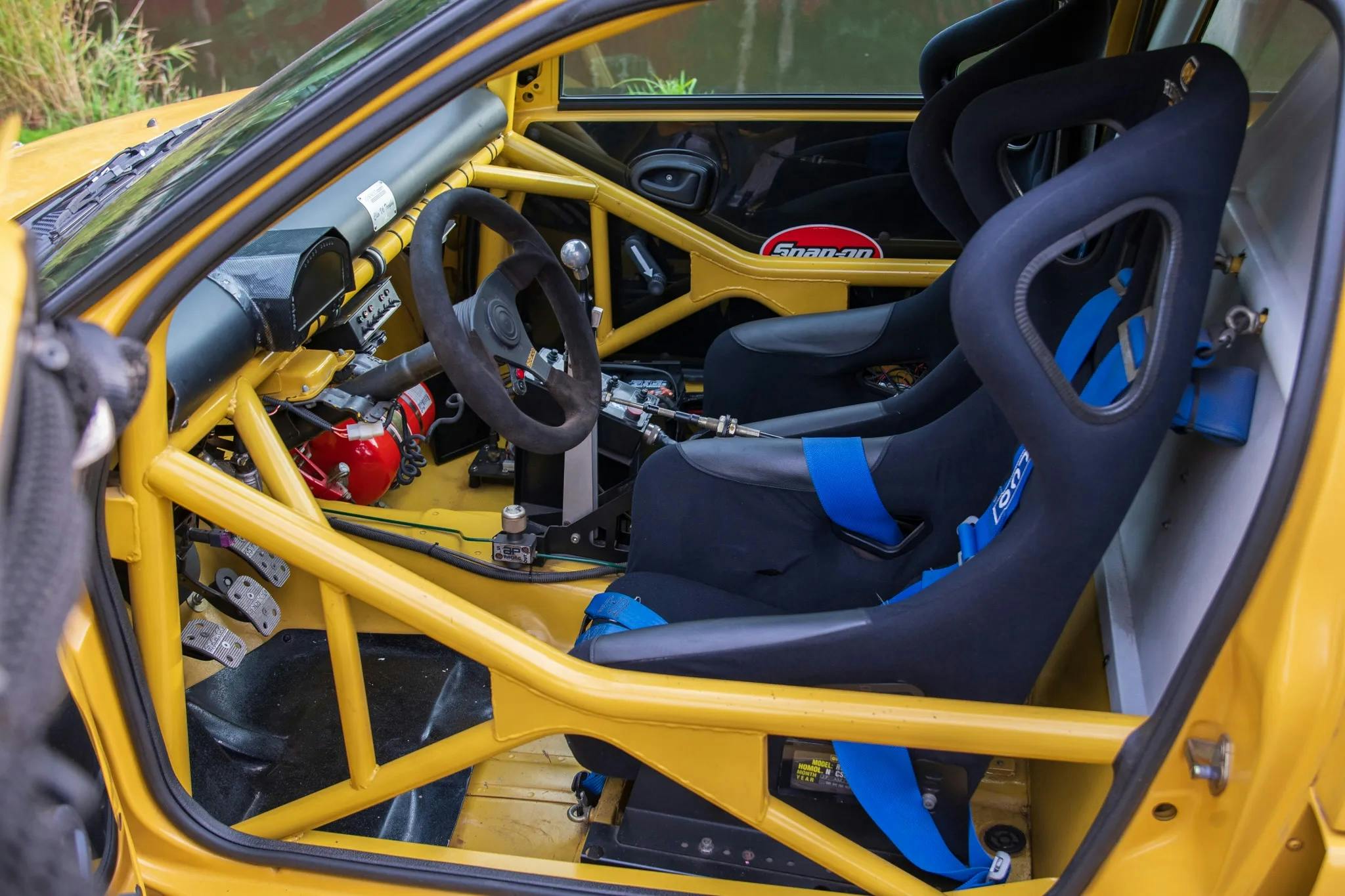
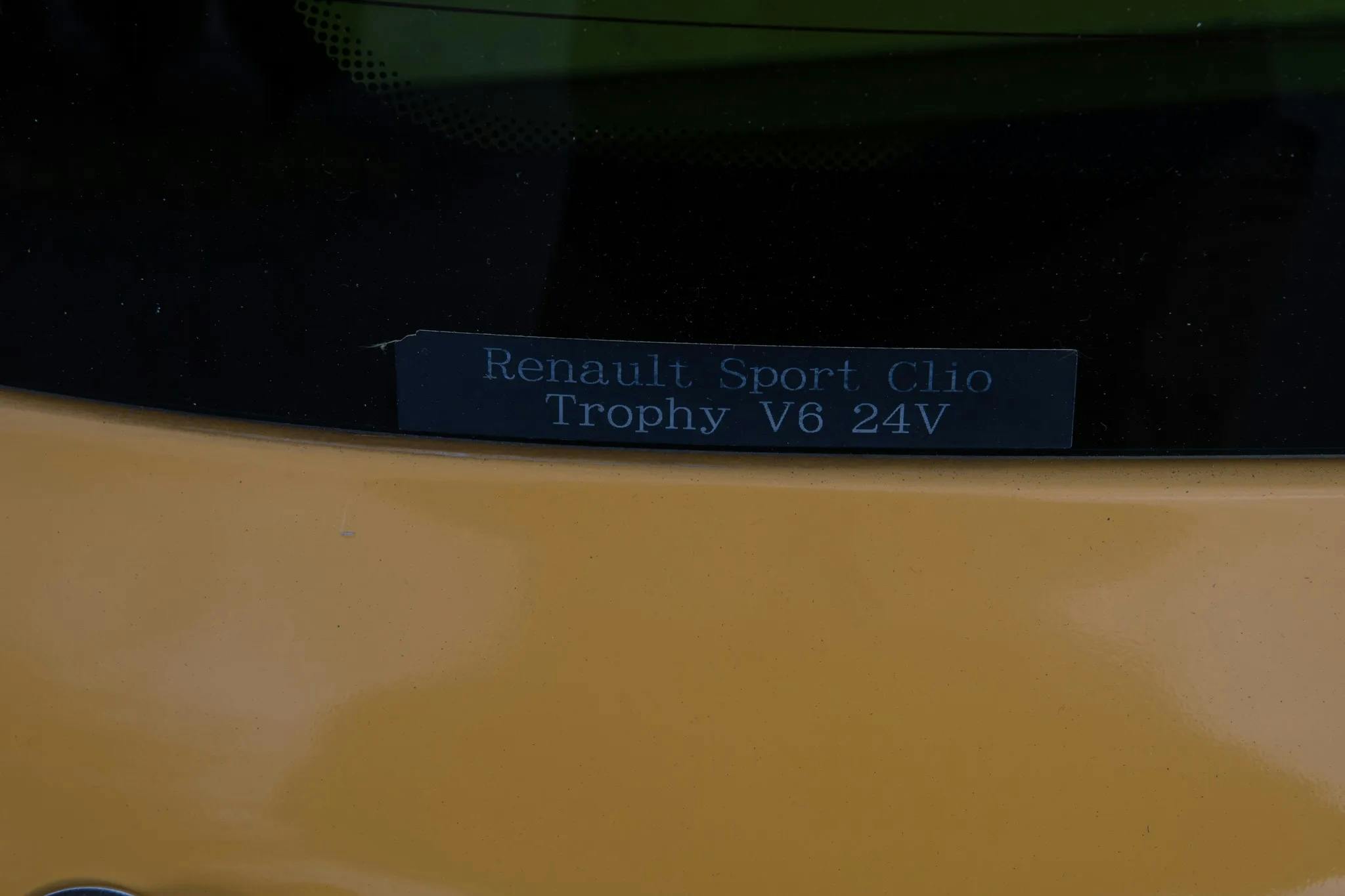


It’s a crazy Frankenstein car. Good luck finding parts in the USA.